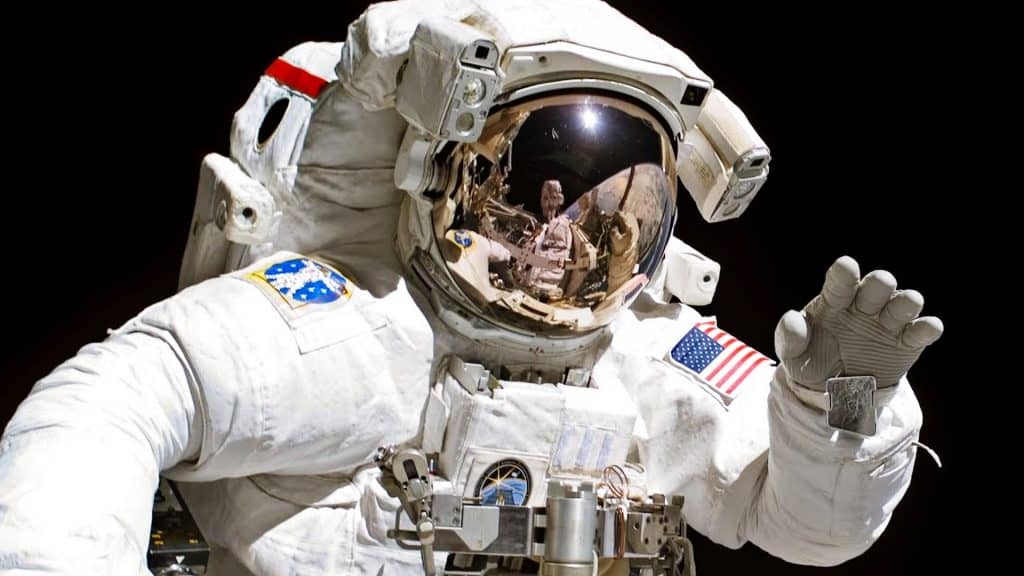You might have thought that spacesuit was just what astronauts prefer to wear, because their fashion idol is the Michelin man. Then you might be surprised to know that a spacesuit can easily be called “a small spacecraft”, especially by NASA. Did you think that it only provides for the astronaut to breath in the vacuum? Then you may also not know that astronauts have to wear diapers as well as many other things. Yes! That has made me change my mind to be a tin-foiled astronaut this Halloween. These spacesuits have a lot in common with our favorite Iron-Man suit. Let us see!
A spacesuit is a necessity for astronauts for more than one reason as it has a lot of features that helps the astronaut to survive the inhospitable environment in space. The most important feature is the provision of oxygen, along with others, such as a spacesuit holds drinkable water, protects against getting too cold, or too hot. Iron-Man, however, is free from these needs. The spacesuit is practically bulletproof, not meant to protect against alien cavalry, but against the space dust. If the astronauts are not allergic, space dust sounds harmless, no? What makes the space dust not so harmless is the fact that it travels faster than a bullet, hence spacesuit is practically bulletproof.
The fish bowl helmet or the visors of the suit are gold-plated to imitate the gold plated sunglasses. No, it is not because they want aliens to see how rich they are, but to protect their eyes from bright sunlight. Underneath the helmet, communication equipment helps the astronaut to talk with crew members during spacewalks. No Pepper Pots’ Facetime though.
A TV camera and lights can be attached to the helmet.
Credits: NASA
The suit itself is made of different layers of materials, each serving a different purpose. Under the suit, a layer of clothing covers the entire astronaut body minus head, hands, and feet. This layer of clothing has tubes sewn into it; the tubes carry water to keep the body cool. Beat that, Iron-Man!
The backpack that astronauts carry holds the oxygen for breathing and helps to remove carbon dioxide. The drinkable water tank is also there in it. It has an electricity supply as well to run fans which move oxygen through the suit. Iron-man, being the superhero, doesn’t need any of these things at all.
If you are a fan of the Iron-Man suit, you are gonna love this. The back of the spacesuit has numerous small thrust jets called SAFER. The Safer is used if an astronaut drifts away from space station into space as it helps them to fly back.
Every mission has these ‘basic suits’ upgraded uniquely for the environment of the destination, such as some missions use the hose connected to the spacesuit allowing the astronaut very limited room to work, while others do not. The boots of the suit are custom made to cater for the gravity and surface of each destination distinctly. Much like “Iron-man Armour” vs the “War Machine.”
Here are some of the spacesuit parts and their functionality, as described by NASA.
Credits: NASA
Some suits are plain white; some have red stripes, and others have candy cane stripes. These variations help to tell one spacewalker from another. Credits: NASA
A spacewalker cannot see the front of the Displays and Control Module while wearing the spacesuit. To see the controls, astronauts wear a wrist mirror on the sleeve. Look at the settings on the front of the module. They are written backward. But “backward” is “forward” in a mirror.
Credits: NASA
The spacesuit arm has 14 layers of material to protect the spacewalker. The liquid cooling and ventilation garment makes up the first three layers. On top of this garment is the bladder layer. It creates the proper pressure for the body. It also holds in the oxygen for breathing. The next layer holds the bladder layer to the correct shape around the astronaut’s body and is made of the same material as camping tents. The ripstop liner is the tear-resistant layer. The next seven layers are Mylar insulation and make the suit act like a thermos. The layers keep the temperature from changing inside. They also protect the spacewalker from being harmed by small, high-speed objects flying through space. The outer layer is made of a blend of three fabrics. One fabric is waterproof. Another is the material used to make bullet-proof vests. The third fabric is fire-resistant. Credits: How Products Are Made

